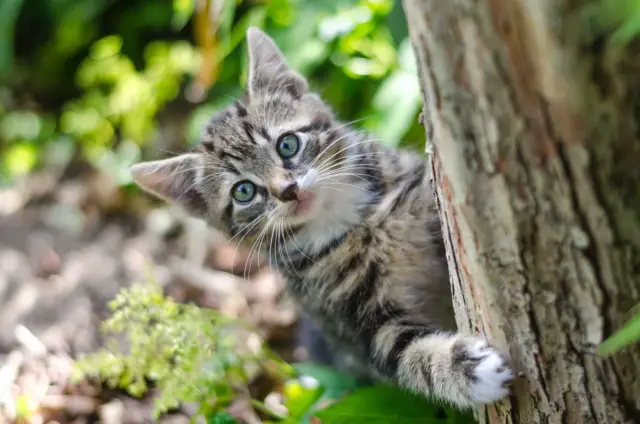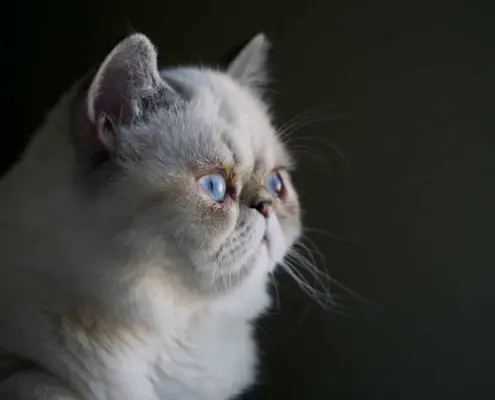
Domesticated cats, also known as house cats or simply “cats,” have been an integral part of human society for thousands of years. These furry companions have a rich history that dates back to ancient civilizations. From their wild ancestors to the diverse breeds we see today, the evolution of domesticated cats is a fascinating story that showcases their adaptability and the bond they have formed with humans.
The history of domestication
The domestication of cats is believed to have begun around 4,000 years ago in ancient Egypt. Unlike dogs, who were actively bred for specific tasks, cats were initially drawn to human settlements due to the abundance of rodents, which provided a readily available food source. Over time, humans recognized the benefits of having cats around and began to actively cultivate their presence.
The wild ancestors of domesticated cats
The wild ancestors of domesticated cats can be traced back to the Near Eastern wildcat, scientifically known as Felis lybica. These small, solitary hunters inhabited regions such as the Middle East and Africa. They possessed the keen senses and agility that allowed them to excel in catching prey and surviving in various environments. This innate hunting instinct would prove essential in their transition from the wild to domestication.
How cats became domesticated
The process of domestication was gradual and occurred naturally as cats became accustomed to living near humans. The initial attraction between humans and cats was based on mutual benefit: humans provided food and shelter, while cats helped control rodent populations. Over time, cats began to develop a level of trust and dependency on humans, eventually leading to the formation of a symbiotic relationship.
The role of cats in ancient civilizations
Cats held a significant role in various ancient civilizations. In ancient Egypt, they were revered as sacred animals and were associated with the goddess Bastet. Killing a cat, even accidentally, was considered a grave offense punishable by death. Cats were even mummified alongside their human counterparts to accompany them in the afterlife. This elevated status further solidified their place in human society.
Cats in different cultures and religions
Cats have been revered and feared in different cultures and religions throughout history. In Norse mythology, the goddess Freyja rode a chariot pulled by two large cats. In Japanese folklore, the “Maneki-neko” or beckoning cat is believed to bring good fortune to its owner. On the other hand, the association of cats with witchcraft during the Middle Ages led to their persecution and mass killings during the infamous witch trials.
The evolution of cat breeds
The domestication of cats eventually led to the development of various breeds. Although the majority of cats are considered mixed breeds or “domestic shorthairs,” there are numerous recognized cat breeds with distinct characteristics and appearances. From the regal Siamese to the fluffy Maine Coon, selective breeding has allowed humans to shape the physical traits and temperaments of these beloved feline companions.
The characteristics of domesticated cats
Domesticated cats possess a range of characteristics that set them apart from their wild ancestors. They have retained their hunting instincts, often engaging in playful activities such as pouncing and chasing toys. Cats also exhibit a strong sense of independence and territoriality, marking their territory with scent and engaging in social behaviors such as grooming. Their ability to form deep emotional bonds with their human caregivers makes them cherished members of many households.
The impact of domesticated cats on human society
The presence of domesticated cats has had a profound impact on human society. Beyond their role as companion animals, cats have provided practical benefits such as pest control. In agricultural societies, cats played a vital role in protecting crops from rodents, thus ensuring food security. Additionally, studies have shown that interacting with cats can have therapeutic effects, reducing stress and improving overall well-being.
The future of domesticated cats
As we look to the future, the bond between humans and domesticated cats shows no signs of weakening. With advancements in veterinary care and nutrition, cats are living longer and healthier lives. However, it is important to address the challenges faced by stray and feral cat populations, ensuring their welfare and preventing their negative impact on ecosystems. Responsible pet ownership and proper management of cat populations are essential to ensure a bright future for our beloved feline companions.
In conclusion, the evolution of domesticated cats is a testament to their adaptability and the enduring bond they have formed with humans. From their wild ancestors to the diverse range of breeds we see today, cats have transitioned from being wild hunters to beloved companions. Their presence has shaped ancient civilizations, cultures, and even religions. As we move forward, it is crucial to appreciate and protect these fascinating creatures, ensuring their well-being and a harmonious coexistence with humans.
If you enjoyed my article, I would appreciate you sharing it with your network.

Sima Ndlebe
Sima writes for CatBuzz. He is interested in Cats, Health and Fitness, and Entrepreneurship.
Published: 13 October 2023



